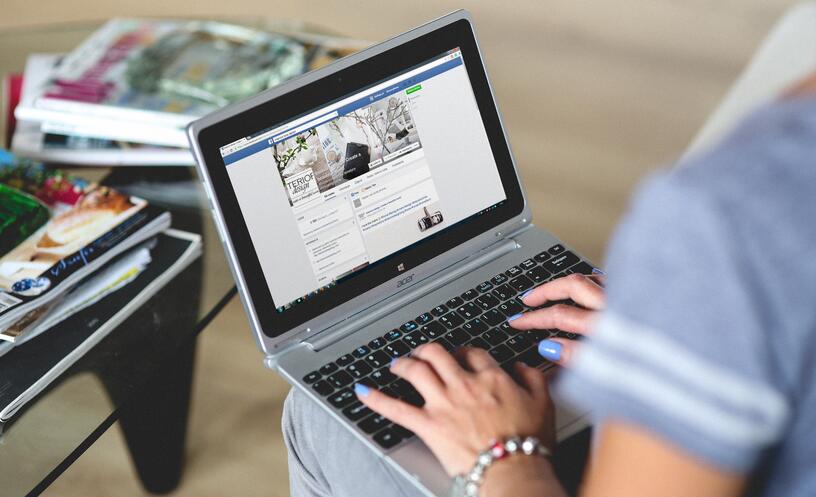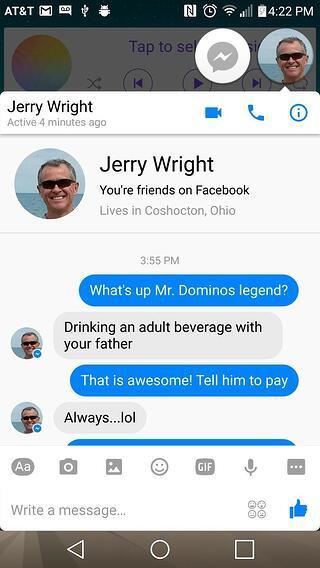Jun 02 2017 Facebook Messenger For Customer Service: Should You Buy Into The Hype?

Like a few of my other colleagues, I had the opportunity to attend the recent Aspect ACE conference in Las Vegas. The primary focus of the event revolved around discussion on Facebook and Interactive Text Response, and Aspect would not sit on an island promoting the upside of jumping on the Facebook wagon.
The Harvard Business Review released an article on the topic and Forrester Research recently published a brief on the topic of Facebook and Customer Service. You can simply Google “Facebook Messenger” and terms like “chatbot” to find article after article on the next “big thing” to revolutionize sales and service.
This overabundance of enthusiasm, however, begs the question: Is the hype around Facebook legit?
900Â Million Monthly Active Users
During a presentation by Facebook’s Bryan Hurren at ACE 2016 (and published by Forrester), one of the main talking points around why people should hop on the Facebook Messenger wagon was, “Nine-hundred million monthly active users” of the application each month.
Look, I get it. If your customers already know how to use the channel, it makes sense to engage them on that channel, no training wheels required. I thought 900 million active users seemed like a dream invented by Facebook, so I pulled out my smartphone and started to test the theory – has the world moved to Messenger to communicate?
My Science Experiment
My unscientific approach involved starting conversations with my 736 Facebook “friends” – or at least a small sample size. Thanks to the game Farmville, I challenged my wife about five years back and added those 700+ “friends” to beat her in the game. (I still brag today that I am more popular!)
Anyway, back to my testing:
- My children: Morgan, Madison and Megan all responded within a few seconds, so the millennials are using Messenger. Which is confusing to me, because I thought they had become too cool for Facebook?
- High school friend: I was in Vegas and decided to use Messenger to connect with an old high school friend. Lo and behold, another test passed, and we chatted back and forth for about 10 minutes.
- Baby boomers: I noticed my Uncle Jerry was on Messenger and placed a bet that this would fail, but I was shocked that the Baby Boomers use it, too. I could not script it any better than the screenshot below, as Jerry responded from a hometown bar having a beer with my father:

I actually wanted to doubt Facebook and question the concept of 900 million people using Messenger. After my experiment, however, I realized that I was wrong. The world uses Messenger on their smartphones, desktop PCs, and the iPads and Kindles.
HD Voice
In customer service, almost every new fad or technology starts the infamous race to “end the agent” and exaggerate the next greatest self-service widget that will shed your costs. Sure, you can add Facebook Messenger and the concept of a chatbot to this pile, but why not embrace one of the key benefits of Messenger in HD voice.
The old phone network has been around for generations and one of the negatives is the analog, low quality of the voice. When a customer needs to talk to an agent, why not make use of the ability to call from Messenger and enable a HD conversation between your agents and customers. It is an incredible “night-and-day” change in how you will think about speaking on the phone.
Video
The ability to provide video provides endless opportunity to drive loyalty with your customers. Why force a customer to explain a problem to an agent or type it in a chat window? They can tap the video button and simply stream a video of the problem to your agents.
My internet and cable service goes down often and I wish Verizon would allow me show the technical service rep a video of the router or cable box. It would eliminate the first five questions that all mean the same thing – “Are you sure the green lights are not blinking?” – and save both Verizon and myself a lot of time.
Conversation History
One of problems of online web chat and phone calls with customer support is the fact that the history of the chat or call is gone once you end the conversation. Having your agents chat back and forth with customers on Messenger or SMS provides that history. So when you provide the step-by-step instructions on how to reset the assigned IP address on an internet router, the customer has those steps saved in Messenger.
Perhaps the next time the same problem occurs, they can truly self-service by going back to a prior discussion thread. I have long been a fan of “text enabling” our clients toll free numbers for the same reason – maintaining persistent conversations with your customers.
Final Thought
Contrary my initial reaction, I have to admit that Messenger does, in fact, live up to the hype, and it is time to adopt a strategy to add the channel to your sales and service teams.
I would recommend starting with enabling your agents chat back and forth with customers on the channel. Give your agents the ability to provide a smiley emoji to customers after they answer a question or solve a problem. It will drive customer loyalty and start that engagement we all strive to achieve.
